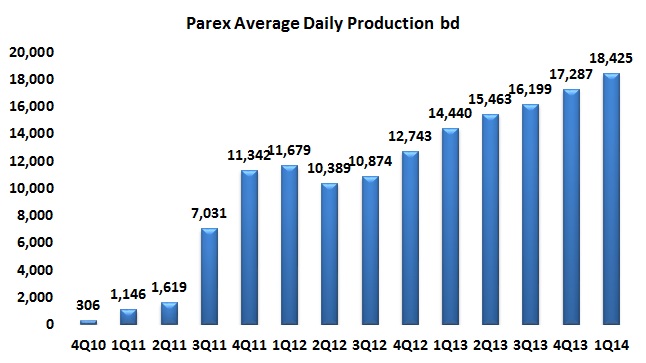The Minister of Mines and Energy Amylkar Acosta confirmed that at least three supermajor oil producers –ExxonMobil (NYSE:XOM), Petrobras (NYSE:PBR) and BG Group (LSE:BG.L)- will participate in the Colombia 2014 Round.

Parex Resources (TSX:PXT) says its production has grown to a historic level during the 1Q14 and announced the acquisition of Verano Energy, part of a plan to consolidate its operations in the Southern Llanos basin.

Canacol Energy (TSX:CNE) reported its fiscal year third quarter 2014 results which included operational and financial gains bright enough for the company to accelerate its investments in drilling programs for Colombia.
The Ministry of Mines and Energy sent its two highest ranking officials to discuss transportation infrastructure at a recent conference held by Ecopetrol (NYSE:EC) transportation spin off Cenit. They announced a new regulatory structure and looked to reaffirm MinMinas commitments to large, strategic infrastructure projects.
Ecopetrol’s (NYSE:EC) president Javier Gutiérrez attended an event in Neiva, Huila to showcase the advances that the NOC has made in the southern region of the country, highlighting production and the return for the local community.
The USO says it has formed its team that will negotiate a new set of terms and collective bargaining agreement with Ecopetrol (NYSE:EC), and has already started training with the bargaining team.